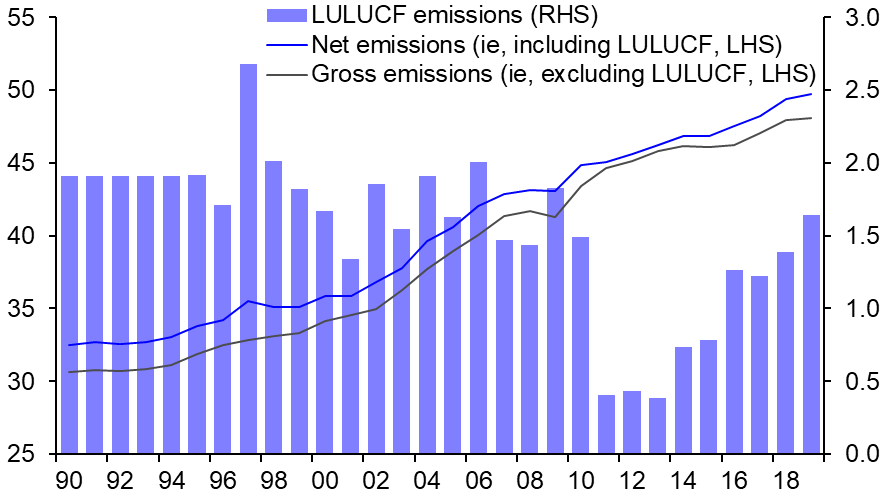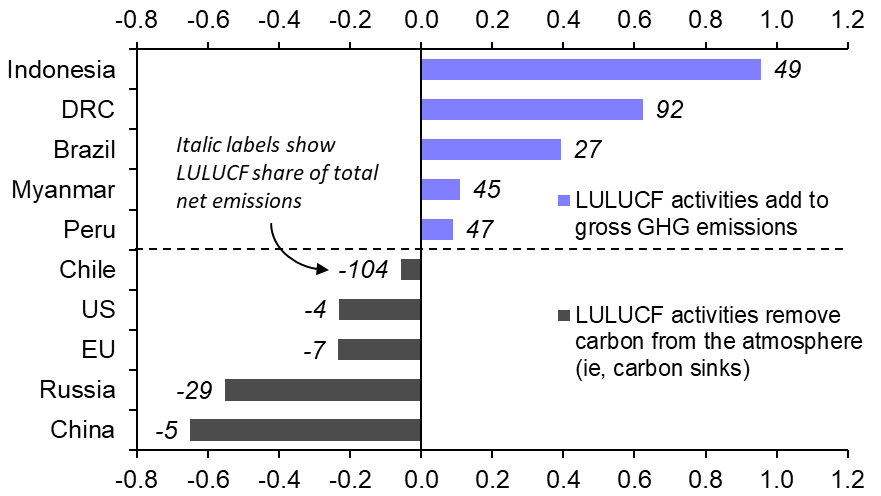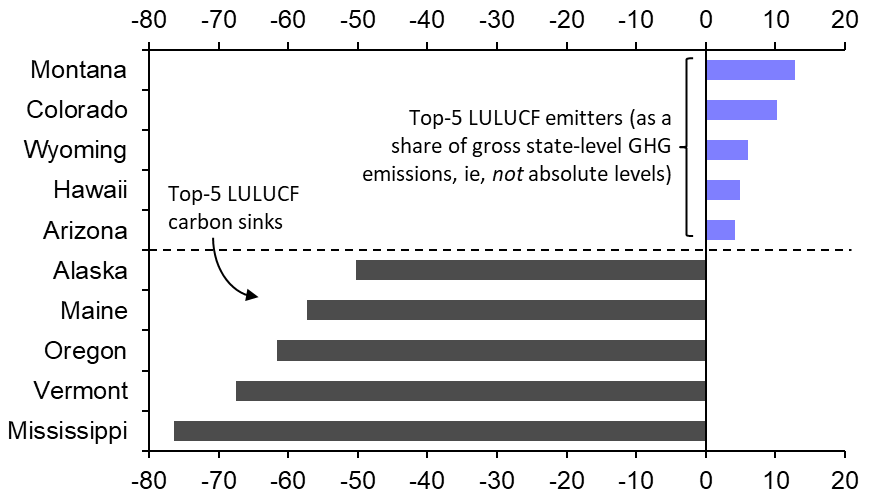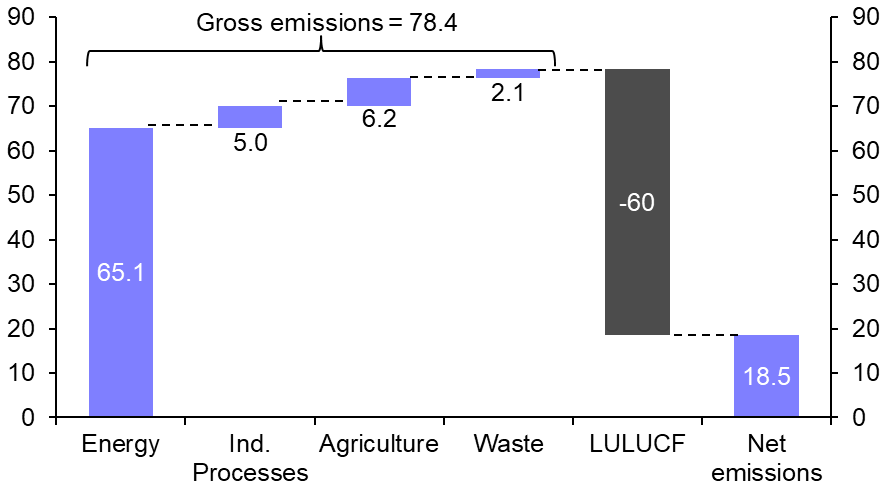International efforts to halt and reverse nature loss dovetail with aims to reduce net greenhouse gas emissions by protecting and expanding so-called carbon sinks, such as forests. But this is only one part of the de-carbonisation puzzle and does not offer an easy substitute for reducing gross greenhouse gas emissions.
The “other” COP
You will have been forgiven for hoping that the end of COP27 – which finally concluded on 20th November – would have been the last that you would have to hear about “COP” for a while. However, the start of the UN Biodiversity Conference in Montreal next week – known as COP15 – means that we will have to endure more media references to the acronym before the year is out. (Recall that “COP” stands for “Conference of the Parties” and technically refers to the governing body of any international treaty.)
The COP15 event in Canada will bring together the parties to the UN Convention on Biological Diversity (CBD). This is one of two sister conventions to the UN Framework Convention on Climate Change (UNFCCC) whose COP has become synonymous with the term. (The other is the UN Convention to Combat Desertification, which has its own COP timetable.) Thousands of delegates are expected to travel to Canada, although it will surely be a small gathering compared to the sprawling circus that the annual Climate Change Conference has become. (More than 35,000 (!) delegates attended the event in Sharm el-Sheikh.)
Bad COP(27), good COP(15)?
We do not profess to have any particular insight about what will come out of COP15. For what it’s worth, we take such international meetings with a healthy dose of scepticism (see here) and this seems justified given that the track record of the CBD since its first COP, in 1994, has been a litany of missed targets. More generally, the failure of the US to ratify the CBD only underlines how the UN conventions have failed to deliver fully multilateral responses to the ultimate collective action problems. (Note that the US is one of only two states – and the only UN member – not to have signed up to the CBD. The other is the Holy See.)
Still, after what was described by Chatham House as a ”hectic, sometimes chaotic” COP27 in Egypt, it is hoped that COP15 will at least be more organised and less contentious. Top of the agenda is to agree on a new set of goals for the remainder of this decade to stop and to reverse nature loss.
Why do we care?
They don’t call economics the dismal science for nothing, and it is an uncomfortable truth that biodiversity is simply not counted by the standard methods of measuring economic output. Indeed, similar to the way in which the physical damage caused by natural disasters does not detract from GDP, economic output would not be affected if a host of animal or plant species were to become extinct. (Paradoxically, reconstruction efforts after natural disasters can boost GDP growth.)
That said, despite economic statisticians’ well-documented myopia, there is increasing awareness that protecting and restoring natural habitats is not only beneficial for biodiversity but also has the added benefit of preserving and potentially expanding carbon sinks. This in turn has the benefit of potentially reducing net greenhouse gas emissions: arithmetically, countries can reduce net greenhouse gas emissions by either reducing gross emissions or by increasing the amount of greenhouse gases that are removed from the atmosphere by carbon sinks (or decreasing the amount that is emitted by the removal of existing carbon sinks).
This segues into one of the most arcane concepts in climate accounting: emissions from land use, land-use change, and forestry – aka “LULUCF”. This category of emissions tries to account for emissions of methane and nitrous oxide as a result of human-influenced effects on land (eg, from wildfires and the conversion of land to wetlands) as well as human-driven changes in the capability of sinks such as forests to absorb carbon dioxide (eg, deforestation).
The rest of this report gives a high-level introduction to the topic of LULUCF. Three points stand out.
First, even by the uncertain standards of measuring greenhouse gas emissions, LULUCF emissions are notoriously hard to measure: the Intergovernmental Panel on Climate Change (IPCC) notes that they “are subject to large uncertainties and high annual variability” and concede that scientists can even only have “low confidence” about the direction of the long-term trend in LULUCF emissions. Yikes.
This uncertainty is partly because of the difficulty in measuring changes in the stock of carbon sinks from year to year – not least forest loss from deforestation which typically has to be measured via satellite. In addition, there can be disagreement between models/researchers about which land-related emissions and changes in carbon sink stocks are a result of human actions and should be classified as LULUCF. In short, it’s a bit of a minefield.
Mindful of these limitations, the CAIT database estimates that global LULUCF emissions amounted to about 1.6 billion tonnes of CO2-equivalent in 2019 (the last year for which data are available). (See Chart 1 and our Global Climate Databank.)
|
Chart 1: Global Greenhouse Gas Emissions (Billion Tonnes of CO2-equivalent) |
|
|
|
Source: CAIT Database |
This masks huge variation from country to country. Indonesia, the Democratic Republic of Congo (DRC), and Brazil are the three largest sources of LULUCF emissions, with combined estimated LULUCF emissions of about two billion tonnes of CO2-equivalent each year; staggeringly, LULUCF emissions in the DRC – largely from deforestation – account for more than 90% of the country’s overall net greenhouse gas emissions. (See Chart 2.) At the other end of the spectrum, China, Russia, the EU, and the US are the world’s largest carbon sinks.
|
Chart 2: Top & Bottom-5 Absolute Sources & Sinks of LULUCF Emissions (Billion Tonnes of CO2-eq., 2019) |
|
|
|
Sources: CAIT Database, Capital Economics |
As well as sizeable differences in the role of LULUCF between countries, there can also be large differences within countries. Chart 3 illustrates this using state-level data for the US, taken from our US Regional Climate Databank. In heavily wooded states, forestland counteracts a large proportion of gross emissions. For example, whereas Mississippi emitted about 78 million tonnes of CO2-equivalent in 2020, largely from the energy sector, 60 million tonnes of CO2-equivalent are estimated to have been removed by the state’s carbon sinks. (See Chart 4.)
|
Chart 3: LULUCF by US State (% of Gross Emissions, 2020) |
|
|
|
Sources: EPA, Capital Economics |
|
Chart 4: Breakdown of Mississippi Greenhouse Gas Emissions (Million Tonnes of CO2-equivalent, 2020) |
|
|
|
Sources: EPA, Capital Economics |
The second point worth bearing in mind is the risk that LULUCF is used as a fudge factor that allows countries to claim progress on reducing net emissions – even whilst potentially allowing gross emissions to rise. This is especially a problem given that net emissions from LULUCF are so hard to measure.
Against this backdrop, organisations such as Climate Action Tracker dedicate a lot of effort to ensuring that countries’ decarbonisation targets are fit for purpose and that they are not overly reliant on LULUCF to bring down net emissions. (Another criticism that is justifiably levelled at governments’ targets is the tendency to only focus on greenhouse gas emissions produced within a country’s territory, rather than tackling the emissions embedded in trade. The EU’s proposed Carbon Border Adjustment Mechanism is perhaps the notable exception.)
Finally, while preserving and protecting existing carbon sinks is a key part of achieving “net zero”,
it’s important to recognise that any reductions in net greenhouse gas emissions from maintaining or increasing carbon sinks are not guaranteed to last. For example, land that is converted back to forestland today might well be cut down, burnt, or flooded in the coming years, which would negate any temporary net benefit from an enlargened carbon sink. (Note that there are similar concerns about offset mechanisms, which are only truly fit for purpose if the underlying projects on which the offsets are based a) genuinely add to the stock of carbon sinks in the world [ie, they would not have happened anyway] and b) are permanent [ie, they won’t be reversed down the line].)
The key point is that focusing on biodiversity and LULUCF is a necessary, but not sufficient, consideration if we are to reduce our greenhouse gas footprints. Crucially, it does not offer any easy substitute for reducing gross emissions.
David Oxley, Head of Climate Economics, david.oxley@capitaleconomics.com



